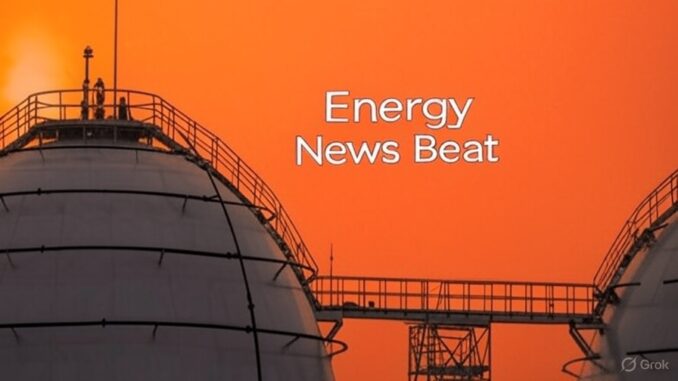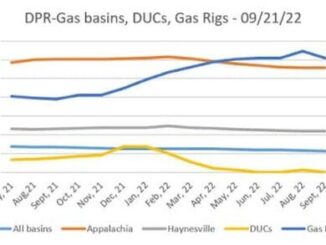
In a significant boost to the U.S. liquefied natural gas (LNG) sector, NextDecade Corporation has greenlit a $6.7 billion expansion project at its Rio Grande LNG facility in Brownsville, Texas. The company announced a positive final investment decision (FID) on Train 5, along with securing the necessary financing and issuing a full notice to proceed to engineering, procurement, and construction contractor Bechtel. This move comes amid growing global demand for LNG and escalating tensions in international energy markets, particularly involving the European Union’s (EU) stringent regulations.
Project Details and Timeline
The expansion involves the construction of Train 5 and related infrastructure, expected to add approximately 6 million tonnes per annum (mtpa) of LNG production capacity. Once operational, this will elevate the Rio Grande facility’s total output to around 30 mtpa, positioning it as one of the largest LNG export terminals in the United States. NextDecade has indicated that the facility could potentially scale up to 48 mtpa with further trains in development.
The $6.7 billion funding package was fully committed, enabling the project to move forward without delays. NextDecade holds an initial economic interest of 50% in Train 5, which is set to increase to 70% once financial investors achieve specified returns. Construction is slated to begin immediately, with commercial operations targeted for the late 2020s. This follows the recent FID on Train 4 in September 2025, which carried a similar economic structure—starting at 40% interest for NextDecade, rising to 60% post-investor returns.
This expansion underscores NextDecade’s confidence in the long-term LNG market, bolstered by recent deals such as a 20-year agreement with EQT Corporation for 1.5 mtpa from Train 5. The project is also expected to create thousands of jobs in South Texas and contribute to U.S. energy exports.
NextDecade’s Recent Earnings and Q4 2025 Investor Expectations
NextDecade’s most recent earnings report, for Q2 2025 (ending June 30, 2025), showed an earnings per share (EPS) of -$0.23, aligning with analyst consensus estimates. This reflects ongoing development costs as the company ramps up its Rio Grande project, with no revenue yet from LNG exports since the facility is still under construction. The prior quarter, Q1 2025, also reported negative EPS amid heavy investments in Trains 1 through 4.
Looking ahead to Q4 2025, investors are optimistic about milestones like the now-achieved FID on Train 5, which was anticipated in this quarter. Analyst consensus for Q3 2025 (ending September 30) EPS is -$0.42, with Q3 earnings expected to be reported around November 6, 2025. For Q4, expectations center on progress toward financial closes and additional offtake agreements, potentially improving the company’s balance sheet. NextDecade’s stock trades at a price-to-book ratio of 6.5x, which some view as premium pricing relative to peers, but the expansion news could drive further upside if global LNG demand remains robust.
Overall, investors are focusing on NextDecade’s path to profitability, with first LNG exports from initial trains expected in 2027. The company’s increasing equity stakes in new trains signal stronger future cash flows, though near-term losses from construction are baked in.
Qatar’s Stance on EU LNG Supplies and Potential U.S. Alignment
Recent reports highlight growing friction between major LNG suppliers and the EU over net-zero regulations.
In a story from EnergyNewsBeat.co titled “Backlash Against EU Net Zero Regulations: Qatar Threatens to Cut LNG Supplies,” Qatar’s Energy Minister, Saad Sherida al-Kaabi, warned that overly burdensome EU laws could deter Qatar from continuing business in Europe, including LNG shipments. Qatar currently supplies 12-14% of the EU’s LNG needs, equivalent to 14-15 billion cubic meters annually, a role it ramped up post-2022 to help Europe wean off Russian gas.
The minister’s comments, echoed in a Reuters interview just yesterday, emphasize that without adjustments to EU methane and emissions rules, Qatar may redirect supplies elsewhere. This backlash stems from the EU’s Methane Regulation, which mandates monitoring, reporting, and limits on emissions from imported LNG starting in March 2025, with penalties by January 2027.
Speculation arises that President Donald Trump, in his second term, might adopt a similar hardline stance. Since taking office in 2025, Trump has fast-tracked U.S. LNG export approvals, reversed Biden-era pauses, and created an energy council to boost oil and gas production. However, amid trade tensions and reciprocal tariffs, Trump could leverage U.S. LNG as a bargaining chip against EU regulations that disadvantage American producers. For instance, if EU methane rules disqualify portions of U.S. LNG, Trump might prioritize exports to Asia or other markets, mirroring Qatar’s threats. This aligns with his “America First” energy policy, which includes a $1.2 trillion economic deal with Qatar signed in May 2025, potentially fostering coordinated responses to EU policies.
Impact of EU Regulations on Global LNG Markets and NextDecade’s Expansion
The EU’s aggressive net-zero push, including methane regulations and potential bans on Russian LNG by January 1, 2026, is poised to reshape global LNG dynamics. These rules could create a “two-tier” market: one for low-methane, compliant LNG favored in Europe, and another for non-compliant volumes redirected to price-sensitive markets like Asia. Non-compliance risks penalties, supply disruptions, and higher costs for EU consumers, exacerbating energy security concerns. Analysts warn this might lead to inefficient trade flows, polarized markets, and elevated global prices if major suppliers like Qatar and the U.S. pivot away.
For the EU, this “self-demise” through overreaching regulations could result in supply shortfalls, especially in winter scenarios. While the bloc has boosted LNG imports and storage, further disruptions (e.g., from Middle East conflicts affecting Qatar shipments) could strain resilience. Qatar’s warnings amplify this, potentially forcing Europe to pay premiums for compliant U.S. or Australian LNG.
On the flip side, this presents opportunities for U.S. exporters like NextDecade. If Qatar reduces EU supplies, demand for American LNG could surge, provided U.S. producers meet methane standards. NextDecade’s Rio Grande expansion, with its focus on low-emission technologies, is well-positioned to capitalize. The project could help fill EU gaps, supporting U.S. export growth—projected to double by 2028 under Trump’s policies. However, if Trump “follows Qatar” by restricting non-compliant exports to the EU, it might accelerate diversification but risk short-term market volatility.In summary, while EU regulations aim to curb emissions, they risk alienating key suppliers and inflating costs, indirectly benefiting compliant U.S. projects like Rio Grande. Investors should monitor geopolitical shifts, as they could enhance NextDecade’s market share in a tightening global LNG landscape.
Investor Takeaways
As of mid-October 2025, NextDecade Corporation (NASDAQ: NEXT) presents a mixed investment profile, with strong long-term growth potential offset by near-term financial challenges and valuation concerns. Here’s a balanced summary for investors:
Growth Catalysts from Expansions: The recent FID on Train 5, backed by $6.7 billion in funding and 20-year offtake agreements for 4.5 mtpa with majors like JERA, EQT, and ConocoPhillips, positions NextDecade to capitalize on rising global LNG demand, potentially reaching 30 mtpa capacity by the early 2030s. This aligns with U.S. policy tailwinds under President Trump, including accelerated export approvals, which could boost U.S. LNG market share amid EU regulatory pressures.
Financial Health and Earnings Outlook: The company remains in a developmental phase with no current revenue, reporting negative EPS of -$0.79 and negative EBITDA of -$199.4 million in recent quarters. High leverage (debt-to-equity ratio of 20.41) and liquidity risks (current/quick ratio of 0.7) classify it as “distressed” with a low GF Score of 39. Q4 2025 expectations include continued losses, but milestones like additional agreements could improve the balance sheet. First exports in 2027 are key to profitability.
Valuation and Stock Performance: Trading at around $6.34 (as of October 15, 2025) with a market cap of $1.6 billion, the stock has a P/B ratio of 6.11-6.5x, viewed as premium or overvalued relative to peers. It has declined 43% since August 2025, following warnings of 34% downside potential, amid CFO resignation and downgrades. However, RSI at 33.5 suggests oversold conditions, and positive insider buying (6 transactions in 3 months) indicates confidence.
Analyst Sentiment and Risks: Analysts give a “Hold” rating with a $10 target price, reflecting cautious optimism. Bullish views highlight long-term growth from AI-driven energy demand and partnerships (e.g., with TotalEnergies), rating it a “Strong Buy.” Bearish concerns include overvaluation, supply chain competition, industry over-exuberance, and sector volatility (beta 0.98). Geopolitical risks, like EU regulations, could create opportunities but also market polarization.
Overall, NextDecade offers compelling upside for patient investors betting on LNG’s future, but near-term volatility and financial strains warrant careful position sizing.
Got Questions on investing in oil and gas? Or do you have a Tax Burden in 2025?
Crude Oil, LNG, Jet Fuel price quote
ENB Top News
ENB
Energy Dashboard
ENB Podcast
ENB Substack






